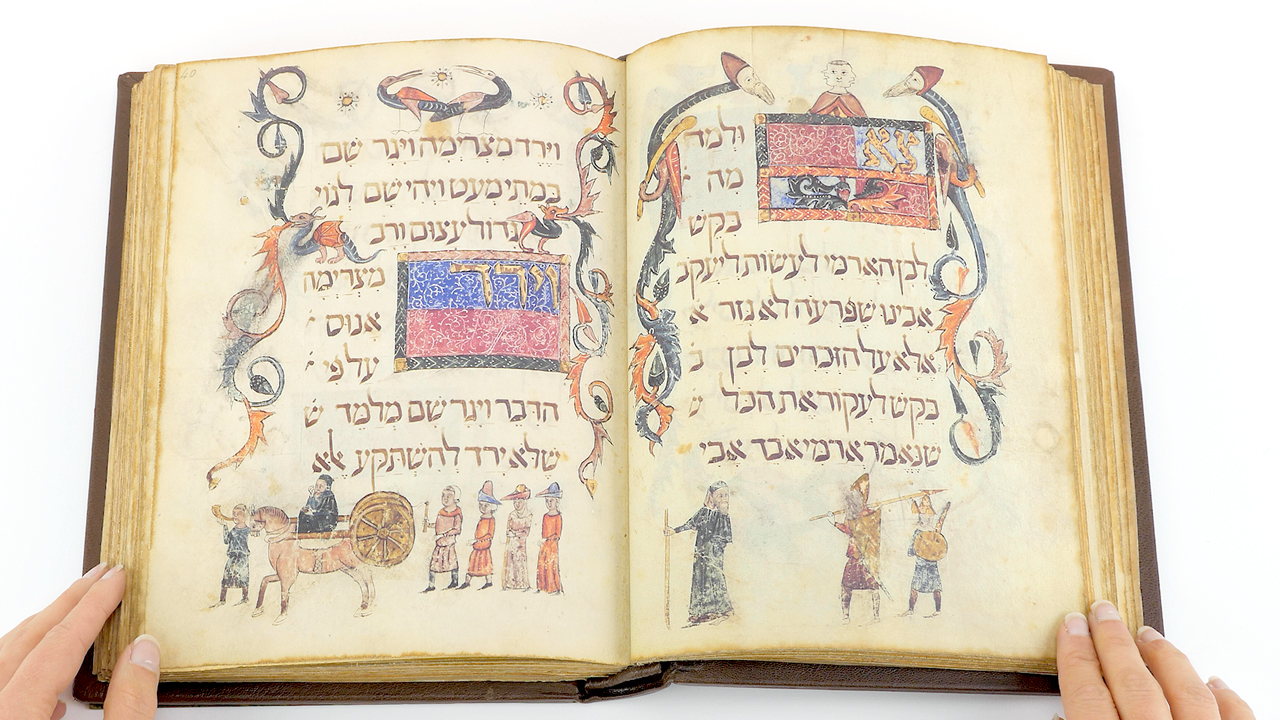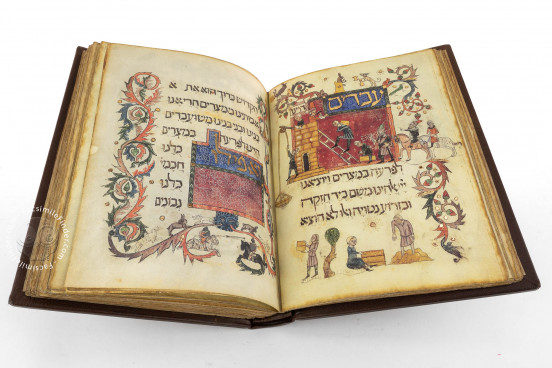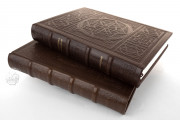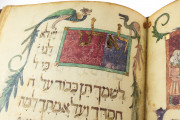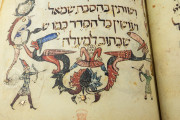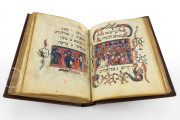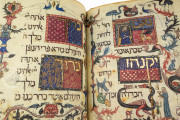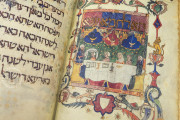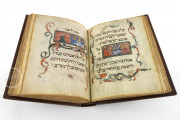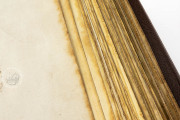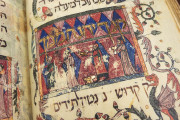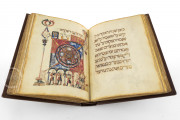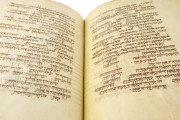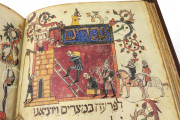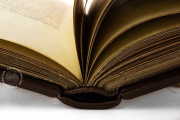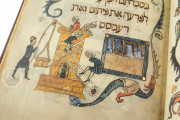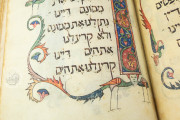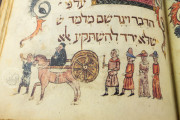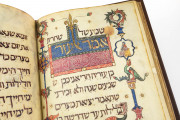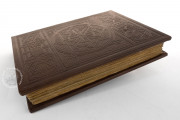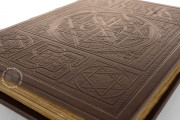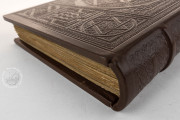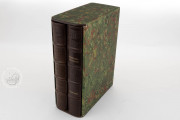The Barcelona Haggadah is a richly illuminated manuscript for the celebration of the Jewish seder, the ceremonial meal of the first evening—or first and second evenings—of Passover. It is named for the shields, which some scholars identify as the arms of the city of Barcelona, on a stylized depiction of a matzo wafer—the unleavened bread of the seder (fol. 61r). The manuscript's core was produced in Catalonia around 1340. It is renowned for its dozens of painted headpieces or word panels, many of which incorporate illustrations of the preparations for the seder and the meal itself, the ritual actions sometimes carried out by animals rather than humans.
Although the whole of Add. 14761 is commonly referred to as the Barcelona Haggadah, the British Library reserves this designation for the Haggadah proper with associated prayers and poems (fols. 9-151), to which were added liturgical poems for Passover and for Shavuot, also known as Pentecost, a later feast in the Jewish spring festival season (fols. 1-8 and 152-161).
An Early Illuminated Haggadah
Although the Barcelona Haggadah's illumination remained unfinished, the manuscript is nevertheless a lavish production. Most of the completed headpieces (word panels) feature gold letters on red and blue diapered grounds in the Gothic style then current in Christian manuscripts made in France and northern Spain. In others, the gold letters are surrounded by pen-flourishing in colored inks.
Thirty of the word panels incorporate illustrations of not only the seder and associated activities but also biblical events and midrashic explanations of them, as well as explanations of aspects of the ceremonial meal. Still more textual illustrations populate the foliage painted in the margins.
Hiding the Matzo
A particularly well-preserved and rare illustration of the seder shows the ritual hiding of one of the matzoth under the tablecloth (fol. 20v). The margins of the page are filled with human and animal figures that bear no relation to the central scene, including a dog offering a cloak to a naked man.
Out of Spain and across the Pyrenees
The original text of the Haggadah was written mainly in Hebrew Square Script by a single scribe, with some passages written in a semi-cursive script. The text follows the Sephardic rite, the tradition of the Jewish diaspora that settled in Spain. The readings from scripture are given both in Hebrew and Aramaic.
That manuscript reached the south of France before the end of the fourteenth century, where another scribe, also writing in Hebrew Square Script, added the poems at front and back, which follow the traditions of Provance. Two of these are in Aramaic.
A Well-Traveled Book
Two of the book's early Italian owners were Mordechai Ottolenghi and Raphael Hayyim Ottolenghi, who wrote their names in it (fol. 151v). The manuscript was sold to one Moses, son of Abraham, in Bologna in 1459, as attested by an inscription (fol. 161v). It came under the scrutiny of Luigi da Bologna, a converted Jew working for the inquisition, in 1599, the same year he reviewed the Golden Haggadah.
The manuscript was signed in the seventeenth century by Jechiel Foa, who is known to have collected Hebrew manuscripts and printed books. It passed through the hands of Carissimo Caro, before the British Museum purchased it in 1844, and the codex was transferred to the British Library upon its establishment in 1973.
We have 1 facsimile edition of the manuscript "Barcelona Haggadah": Barcelona Haggadah facsimile edition, published by Facsimile Editions Ltd., 1992
Request Info / Price
